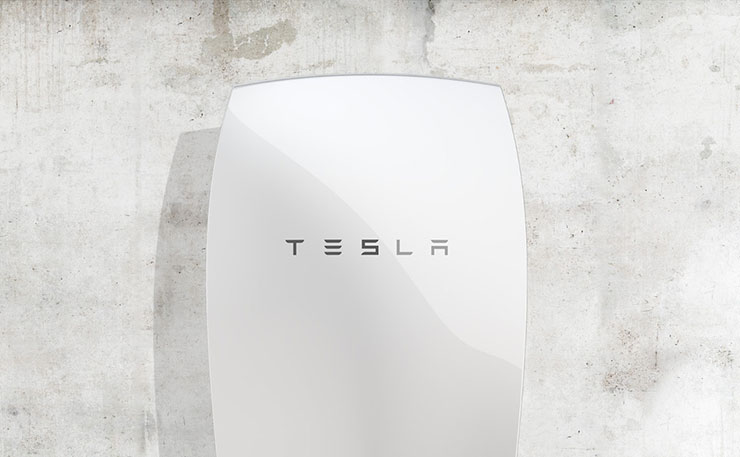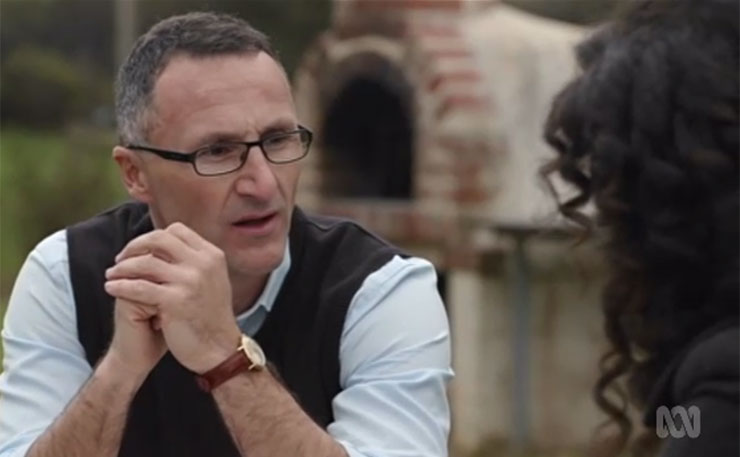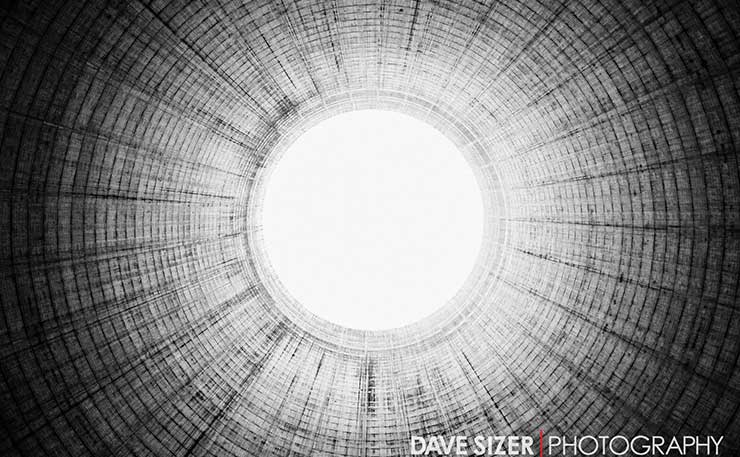Gas is not the answer, nor batteries nor hydro, writes Geoff Russell.
South Australian Premier Jay Weatherill recently announced a plan to save something in South Australia. Whether it was his political skin or our power supply is a matter of debate. At it’s heart was gas, but it got plenty of Greenie points, or should that be preferences, for putting a really big battery on the table as well.
This was quickly followed by Prime Minister Turnbull swinging an even bigger battery up onto the bench.
What? Didn’t Turnbull promise to expand the Snowy Mountains Hydro capacity by 2000 MW? Yes. But if you think the Snowy scheme is other than a really big battery, then you don’t quite understand how it works.
A very short primer on batteries
Here’s a quick explanation of battery terminology. The voltage of a typical home battery tells you something about the power you can get from it. But voltage is an indirect term; the power of big batteries tends to be stated more directly in watts.

The power of anything is the rate at which it can supply energy. Many electric kettles have a power of 2000 watts. If it takes such a kettle 2 minutes to boil a litre of water, then the energy used is 2000 x 2 = 4000 watt-minutes. It couldn’t be simpler, just multiply the power by the time and add the time suffix to the result to make it clear that 4000 is a measure of energy and not power.
Incidentally, if you know it takes 4000 watt-minutes to boil a litre of water, then how many minutes will it take if your kettle is just 500 watts? Can you save electricity? No, the energy required is the same, it just takes longer. How long?
8 minutes… because 500 watts x 8 minutes = 4000 watt-minutes.
Weatherill’s announcement was for a 100 megawatt battery. But that tells you half of nothing because the power of a battery isn’t usually the thing that matters.
If you buy an Uninterruptible Power Supply (UPS) for your computer, the fact that it’s 240 Volts is a given. So what’s the thing which matters … and determines the price? It’s how long you want to keep your computer running when the power drops.
A 5-minute UPS is cheap, a 5-hour UPS is a very different proposition.
Similarly, there are many 1.5 Volt batteries on the market and the fact that they are all 1.5 Volts tells you that you can get roughly the same power from them, but nothing about how long you can get it.
An A76 button battery is a tiny 1.5 Volt battery which will cost you a couple of dollars. A lithium L91 AA battery will cost about twice as much, but the really big difference isn’t the size or cost, it’s the capacity; which is the amount of energy you can get out of it before it goes flat. You can get about 25 times more energy out of the L91 than the tiny A76.
How long will one of Weatherill’s 100 MW batteries last? Nobody knows because he didn’t tell anybody how big it was, just how powerful. There is a long history of people using power figures of different technologies in the mistaken (or deliberately misleading) belief that they are somehow equivalent. Typically by comparing 100 MW of wind or solar with 100 MW of some baseload source, like nuclear, without pointing out that the 100 MW of the latter will generate about 3 times more energy in a year than 100 MW of wind turbines and about 5 to 7 times more than 100 MW of solar. A 100 MW gas generator will cover you for a 5 day 100 MW excess in demand, but a 100 MW battery would be totally impractical (meaning hugely expensive in both financial and ecological terms) for such a purpose.
Elon Musk, white knight or just another greedy rich guy?
When your transmission towers are blown over and you lose 400 MW of wind capacity, like we did last year, how long do you need a battery to last if it was your sole source of backup?
Let’s suppose you can unpack a replacement transmission tower kit from Ikea and assemble it in 12 hours. In which case you need one or more batteries to deliver 12 x 400 = 4800 MW-hours of energy.
Of course if Elon Musk had his way, every household in South Australia would have one of his 14 kilowatt-hour Powerwall batteries. That’s certainly one approach and according to Richard Di Natale, it’s the way of the future.
Of course it is… if you are on a Parliamentary salary. Given 644,000 households in South Australia and the current cost of $8,000 per battery, this would yield Tesla and suppliers about $5 billion dollars plus another $1.2 billion for installation fees.

But of course Musk isn’t interested in optimal solutions to our power or climate problems, he just wants to make money. Musk’s customer base is the rich and the rich will happily buy his batteries so that they aren’t inconvenienced by the problems that might upset the rest of us. Especially if they are given tax cuts by rich politicians to help them all afford said batteries.
After all, why should the rich contribute taxes to help society solve a problem which doesn’t affect them? Or, more accurately, which won’t affect them when they have their own personal very large batteries.
Apart from the ridiculous cost, what have I ignored in my battery example? It’s a small matter, but household electricity is typically only about a quarter of all electricity. Meaning we need rather more batteries, with much more power than those Powerwalls. Of course, that will change in SA as our industries go elsewhere. I’ve also ignored the issue of where the energy comes from to charge the batteries. These are but minor details in what was merely an illustrative example of how selfish and wasteful putting big batteries in houses is.
Weatherill and his advisers obviously appreciate this, which is why they haven’t suggested a battery solution and have gone straight to gas. Gas is a fossil fuel climate disaster, but it works. Big batteries are an ecological and financial disaster, but a great contribution to the getting-green-preferences problem Weatherill will have at the next election.
Batteries aren’t clean, green or renewable
The other critical aspects of batteries are what kind of mines and factories are used to produce them, plus their waste management and the disposal or recycling of the materials. Typically, batteries suck in all of these. I’ve written about them before, and will certainly do so again!
Turnbull’s bigger battery bid
But what about Turnbull’s really large battery? He said it would be 2000MW. But again, we have no idea of the energy it will deliver because he’s talking about a hydro scheme… which is really more like a battery than a baseload power system.
There’s nowhere near enough dam capacity or water to run the Snowy system as a 24×7 baseload power system… so it isn’t. It is used to supply power when peaks in demand exceed baseload capacity. About 85 percent of the time, the Snowy turbines are idle. So the size of Turnbull’s battery is determined by climate, rainfall and the competing demands of others for that water; and there are plenty of those.
What Turnbull is actually promising is to build some turbines that are rated at 2000MW and tunnels to hopefully deliver water to them when it is available. Having no water is like having no wind or no sun; it means your battery is flat. Who remembers our last big eastern Australian drought? Obviously not Turnbull.
The bottom line
What is absolutely certain about both solutions is that wind and solar have been shown for what they are; useless without a suitable non-renewable backup. This could be gas or vast tonnages of polluting toxic mined-by-children cobalt and lithium batteries, or even bigger tonnages of toxic polluting lead-acid batteries lauded by Richard Di Natale, or the even bigger tonnages from logged wildlife habitat or crops favoured by the German “Greens”, or vast chemical fertiliser batteries (N.B. The much praised molten salt batteries aren’t sodium chloride but a mix of sodium and potassium nitrate made in chemical factories from mined raw materials).
For all of these, the problems are big and hard; big because of the scale required and hard because of challenging technology and logistics. Resorting to gas is just putting a finger in the dyke; it’s just another fossil fuel and has to be eliminated as fast as possible.
If only we’d started earlier
It was late in 2008 when I changed my views about nuclear power. A year later the United Arab Emirates (with a population of just over 9 million) began their nuclear program and the first reactor will come on line this year. It’s a South Korean APR1400; a 1400 megawatt reactor.
Each year it will generate as much electricity as 47 Nyngan solar farms backed up with 1.6 million tonnes of molten fertiliser (about half the global annual production of these salts). In 2018, the second APR1400 will come on-line, and then in 2019 the third and in 2020 the fourth.

All up we are talking about a baseload energy source equal to 188 Nyngan solar farms backed up by 6.4 million tonnes of fertiliser batteries. That’s what I call vision.
Why are we so lacking in vision in Australia? Why are we so beholden to a luddite environmental movement with radiophobia as a result of not having caught up with the last three decades of science on radiation? We saw the result of radiophobia in Fukushima… the Government killed people in an astonishing demonstration of ignorance fuelled fear and consequent panic; evacuating against IAEA guidelines. Of course, it isn’t professional environmental scientists I’m talking about, but the populist movement.
The scientists are largely pro-nuclear. They understand that climate destabilisation is a massive risk compared to which, not much else rates a mention. Why aren’t the anti-nuclear radiophobes treated like the anti-vaxxers; they are cut from the same cloth.
We could have been well on our way to a clean energy future, but we are stuck with visionless politicians and a luddite so-called environmental movement.
Donate To New Matilda
New Matilda is a small, independent media outlet. We survive through reader contributions, and never losing a lawsuit. If you got something from this article, giving something back helps us to continue speaking truth to power. Every little bit counts.






